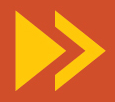By: Amber Babyak
Public health involves and affects everyone. From catching the common cold to the onset of a sudden, wide-spread disease—the health of the public is always an area of top concern. With the implementation of electronic health records, health information exchanges, and other tools of health information technology, the health and well-being of the masses can be positively impacted. Public health concerns communities, small and large, and how to keep them healthy. The integration of this innovative technology can have an effect on the health of such populations through reporting capabilities, connected local health systems, and large-scale connections.
With advanced technology, most specifically electronic health records, health care providers have the capability to generate crucial reports almost in minutes. No longer does valuable information have to be searched for like a needle in a haystack; this needle being possibly life-saving data and the haystack a room full of paper charts. Suppose a primary care doctor suspects a familiar ailment is present in a number of his or her patients; running a simple query in the EHR (electronic health record) may assist in determining if this suspicion can be justified or not. Moreover, the capability can be utilized further with more detailed reporting, such as searching by age, location, and/or past complications. In the end, the provider has a way to conclude if there is a sickness that is spreading and if action must be taken to control it. More proficient reporting helps to extrapolate data and transform it into information. Of course, different types of reporting mechanisms have been in available in the past. Now, the process has been simplified and that much more useful.
Health information technology promotes a healthier community; one in which can be notified of common health trends and presented with better care. As health information exchanges come to fruition across the country, so will the concept of health and wellness communities that are connected like never before. Suppose the caregiver in the previous example does notice similar tendencies among a certain population of their patients; this healthcare giver would then have the opportunity to extract information from a repository of comparable information and make their own contributions. Providers across the area are performing such actions and this shared information can be reviewed on a much larger scale. Officials conclude the public is at risk of this condition and take appropriate action to lessen the consequences of this ailment on their constituents. The response can become much more efficient and timelier precaution measures can be applied. Not only is information being shared, but used. Driving down Main Street U.S.A., one can see it is populated by healthcare offices which means numerous patients are present therefore bringing together insurmountable pieces of data that can be used to benefit these same patients. Data that is by the patients is used for the patients.
The possibilities are endless when it comes to how deeply our health data can be stored and most importantly, exchanged. If the health information exchange formerly mentioned has the opportunity to disperse its information to a state exchange and possibly one day nationally, the possibilities are endless. Public health is no longer confined to your local region but an endless wire of connections. If an outbreak occurs in one state, another state may be able to search for familiar symptoms amongst their patient-base in hopes of halting the spread of an outbreak. Such broad connections can offer earlier detection of shared symptoms/illnesses, more rapid disbursement of information, and offer assistance through extreme and emergency situations. The possibilities are truly endless and this is only just the beginning. The Internet didn’t pop up one day and we were instantly linked like we never before thought we could be but eventually this did become a reality. Hopefully, the same can one day be said for the people’s health.
Our communities and their health and well-being should experience the same benefits that other aspects of life have realized through technology. Health information technology allows for an efficient conversation to take place between a patient’s healthcare providers including amongst those making integral decisions that help keep our communities as a whole safer and healthier. When one patient is healthier, the public is hence healthier as well. Reports can be run to pinpoint a virus that is being spread amongst a specific population, such information is transmitted to the health information exchange, public health officials take necessary steps, and the end-result is a benefit to public health. “An apple a day” is still a good notion, but combining that notion with technology that keeps patients healthy and data that is constantly being transferred amongst health professionals and officials is a prescription for the future.
Amber Babyak is an account manager with the University of Central Florida’s Regional Extension Center which assists in electronic health record implementation. Areas of concentration include supporting local healthcare practices in their transition to electronic health records, Meaningful Use, and staying up-to-date with the latest in the revolution of healthcare information technology. She has held this position since the summer of 2012. In 2011, Babyak earned a Master of Science degree in Biomedical Informatics from Nova Southeastern University and interned with the UCF Regional Extension Center. Contact can be made to ababyak@ucf-rec.org.
